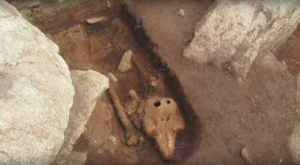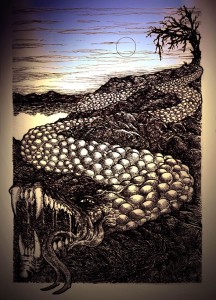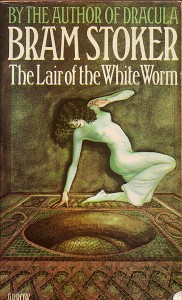
I recently helped to plant dune grass along the shoreline of Window’s Hole in Greenport. The grass will help preserve the beach in storms. The project is sponsored by the Peconic Land Trust, based in Southampton, NY and serving the Twin Forks of Long Island.
Widow’s Hole Preserve lies on top of an old marine Esso station that used to serve the fishing fleet in Greenport decades ago. It was abandoned, and finally donated to the nonprofit in lieu of cleaning up the old underground tanks. They are probably better off left undisturbed.
Widow’s Hole is a wonderful place to walk and view part of Peconic Bay, Shelter Island, Greenport and the neighboring oyster farm. The volunteer work was satisfying physically and spiritually. I loved the idea of planting grass that one day I would see waving in the breeze. It felt good to restore shoreline habitat. But I liked most of all the spirituality that accompanied the planting, and the wonderful feeling of wholeness and connection in surveying the finished work and bay.


On October 22, 2015 one of my Trinity College classmates, Sr. Kathryn Webster, SND, ’74, was invited to give the 10th anniversary lecture for the “Sower’s Seed” program. Established by Kathy Snider Dunn ’64 and her family, the program highlights alumnae who have incorporated into their lives the traditions of community service and social justice that are central to the Trinity experience and reflect the Catholic tradition that influences Trinity’s mission. These graduates are invited to come to campus to share their stories with Trinity students, in the hope that their stories will inspire new generations to consider community service, either as a volunteer or as a career. 
Kathryn Webster entered Notre Dame at Ilchester, Maryland in 1976. After her initial formation in 1979 she went to teach sixth graders at the St. Catherine of Genoa school in Brooklyn, New York. In 1984 the congregation sent her to Brazil. She has lived there ever since. Sr. Katy has lived in several different towns in the Amazon Basin. She’s now in Anapu, a city in the Brazilian state of Pará. She lives with three other SNDs, working as part of a pastoral team visiting communities, holding meetings, and supporting local people in their struggle for land, security and habitat protection. “My life is a rich and wonderful life,” Katy said, “and I am very grateful for the opportunity to live and work among the people of the Transamazon.” 
The Sisters of Notre Dame de Namur began their Amazon mission in 1962 with five sisters “imbued with Gospel values and Vatican II perspectives.” Sr. Dorothy Stang arrived a few years later, and became famous both her advocacy and martrydom. She was assassinated in Anapu in 2005. Sr. Dorothy had been outspoken in her efforts on behalf of the poor, small farming families and the environment. “The death of the forest is the end of our life,” she said. She had received death threats from loggers and land owners. Hired gunmen shot her six times and left her to die on a dirt road. Mining companies have now moved into the area. 
Sr. Katy worked alongside Sr. Dorothy Strang and has continued Sr. Dorothy’s ministry. Social and environmental justice advocacy in Brazil is “boots to the ground” hard, gritty, dangerous work. “The struggle,” Sr. Katy said, “is for life: of the people, of the land, the forest and the rivers. We are 50 miles from the Belo Monte complex, a hydroelectric dam that is being built after 30 years of protest because it is a natural disaster, and the energy it will product will not benefit the local population and really is not needed.” 
I didn’t know Katy well at school but I am very proud to be her classmate. Our Trinity years helped steer both of us into environmental work and shaped our ethics and spirituality. 
In September 2017 archaeologists were wrapping up an excavation on the English Channel island of Chapelle Dom Hue when they made an unexpected and mystifying discovery. The excavation revealed a carefully cut grave plot, which the archaeologists reasonably assumed would hold the remains of a deceased human. Instead, they found that the grave contained the bones of a juvenile porpoise. 
The grave, carefully cut into the rocky soil on a high point of the island overlooking the sea, was constructed with the same techniques used for human graves.
The discovery was made at the site of a medieval monastic site, which was once occupied by monks searching for solitude. The team believes the bones date to the 13th or 14th century.
Philip de Jersey, a States of Guernsey archaeologist, said: “If they had eaten it or killed it for the blubber, why take the trouble to bury it? It was entirely consistent with a human burial, which is one of the most puzzling aspects,” de Jersey added. “The grave cut has been dug very carefully, with vertical sides and a flat base cut into the underlying bedrock. This has taken some considerable care and effort.”
He said it was the most unusual find in his 35-year career. “It’s very peculiar, I don’t know what to make of it. Why go to the trouble of burying a porpoise in what looks like a grave. It’s a wonderful surprise.”
Perhaps the answer is obvious: a wild porpoise developed a bond with one or more of the monks. Someone may have started to feed it, or found it stranded and helped it back into the sea. Or, the porpoise and the man saw each other at a certain time of day in the same spot and a companionship developed. When it died, or if it was killed, the porpoise was lovingly buried. 
See the excavation video.
St. Hilda of Whitby or Hild of Whitby (c. 614-680 A.D.) was a Saxon abbess and a member of the ancient Northumbrian nobility. She is frequently depicted with a pastoral staff and carrying an abbey church. There are often ammonites at her feet. 
The historian, St. Bede (who was about eight years old when she died), records she hosted the Synod of Whitby, at which Celtic and Roman Catholicism met to decide on liturgical matters in 664 A.D. She is an important person, and personality, in the history of the early development of Christianity in Britain. St. Hilda, or “Mother” as she was affectionately known, was a source of encouragement and counsel for people from all walks of life.
Hilda was baptized at age 13 by St. Paulinus of York, who converted her great-uncle, St. Edwin, King of Northumbria and all of his court to the Christian faith. She lived the first half of her life as a noblewoman, but at the age of 33 she became a nun. Whitby Abbey was a double monastery housing both monks and nuns, and Hilda presided over both communities. Whitby Abbey became well-known as a place of learning. For more on her life, especially her importance to women in the Church, read here.
St. Hilda is associated with several legends, especially turning snakes into stone.
Ammonites were frequently interpreted as being coiled snakes that had turned to stone and somehow lost their heads. They were often called snakestones. Most of the legends surrounding snakestones centered around Whitby. Sir Walter Scott recounts in his 1808 poem, Marmion, how snakestones came to be:
They told, how in their convent cell – A Saxon Princess once did dwell, The lovely Edelfled. And how, of thousand snakes, each one – Was changed into a coil of stone. When holy Hilda pray’d: Themselves, within their holy bound, Their stony folds had often found. They told, how sea-fowls’ pinions fail, as over Whitby’s towers they sail. And, sinking down, with flutterings faint, They do their homage to the saint.
The legend goes that she turned all the snakes to stone in Whitby in order to clear the ground for a new convent. In response to her devout praying, the snakes coiled up, turned to stone, and fell off the edge of the cliffs after she cut off their heads with a whip. The absence of heads is also attributed to a curse by St. Cuthbert. 
It has become a tradition in Whitby to carve snakeheads onto ammonites. These snakestones, usually specimens of Hildoceras (named in honor of St. Hilda) and Dactylioceras are used for this purpose. Some of the carved and polished specimens from Whitby were found in Norway, clearly traded or transported by Norse settlers. In Elizabethan England snakestone brooches of jet were highly prized.
Hilda was succeeded as abbess by Eanflaed, widow of King Oswiu of Northumbria, and their daughter, Aelfflaed. St. Hilda and Eanflaed were cousins. All three were buried at Whitby Abbey with St. Hilda.
After the rule of Aelfflaed as abbess, nothing more is known of Whitby until it was destroyed by Vikings in 867. After the Norman invasion of England in 1066 AD, monks from Evesham refounded the abbey as a Benedictine house for men. It continued until the Dissolution of the Monasteries by King Henry VIII in 1539.
According to local folklore, the the wraith of St. Hilda appears in the abbey ruins in a shroud; and the bells of the abbey can be heard ringing under the sea, where they sank with the ship taking them to London after the abbey was dismantled.
The 2013 novel Hild by Nicola Griffith is based on the life of St. Hilda. She also appears as a main character in Absolution for Murder, the first book in Peter Tremayne’s Sister Fidelma mysteries.
St. Colman was the first bishop of Dromore in County Down, Ireland. Catholic sources disagree on on practically all other facts. In some books his feast day is celebrated on May 7th; in others June 7th or October 27th. He is also referred to sometimes as Mocholmoc, or Mocholmog. He may have been born in 450 , 514, or 516 A.D. Again, the sources don’t agree. Part of this confusion may be that there are no less than 120 Irish saints named Colman or Colum, and the stories may have gotten confused. St. Colman was probably interred at Dormore, but though the Breviary of Aberdeen gives Inchmacome as his place of burial.
On one thing all sources agree: St. Colman saved a maiden from a river monster, known as a wurrum or wyrm. 
The incident is described in the 1896 book, Irish Local Legends by Lageniensis (pen name of Rev. John O’Hanlon):
“Not far from the espiscopal city of Dromore, flow the lazy deep waters of the River Lagan, and often the Patron Saint, Bishop Colman, rambled along its banks in prayer and meditation. Indeed, if tradition speak the truth, often he passed over it with dry feet. But, it was well-known, a great water monster lurked beneath its surface, always in quest of prey. Not withstanding the danger of approaching him, yet, an incautious and innocent young damsel went down the bank, and stood upon some stepping stones to beetle her linen. The wily monster sailed slowly towards her, and before she was aware of his approach, he suddenly reared his huge head from the deep, opened his tremendous jaws, and at one gulp swallowed the poor maiden alive. Although her terror was very great, she had the presence of mind to call out, ‘Oh, Holy Colman, save me!’ Her cry was heard by the saint, and he prayed to heaven for her release. Some of the girl’s companions, who stood on the bank, and who witnessed that fearful doom, set up shouts and screams. But St. Colman approached the river, and commanded the infernal beast to deliver up its prey. Then the girl he had swallowed was cast unharmed on the bank. There, to this very day, are shown the tracks of the holy bishop’s feet, and that path is called ‘Saint Colman’s-road.’
In one re-telling, St. Colman also recovered from the water the girl’s book of palms, and the young woman subsequently entered a convent.
 In the book, The Celtic Dragon Myth by J. F. Campbell (1911) Irish antiquarian, William Reeves, Church of Ireland Bishop of Down, Connor and Dromore (1866-1892) commented on the story’s possible occurrence: “The belief,” said Bishop Reeves, “that certain rivers and lakes were haunted by serpents of a demonical and terrible character was current among the Irish at a very remote period, and still revails in many parts of Ireland.”
In the book, The Celtic Dragon Myth by J. F. Campbell (1911) Irish antiquarian, William Reeves, Church of Ireland Bishop of Down, Connor and Dromore (1866-1892) commented on the story’s possible occurrence: “The belief,” said Bishop Reeves, “that certain rivers and lakes were haunted by serpents of a demonical and terrible character was current among the Irish at a very remote period, and still revails in many parts of Ireland.”
W. R. Fanu, 19th c. Irish horror writer and folklorist, echoed the belief in his book, Seventy Years of Irish Life: “The dreadful beast, the wurrum–half fish, half dragon–still survives in many a mountain lake–seldom seen, indeed, but often heard. Near our fishing quarters in Kerry there are two such lakes, one the beautiful little lake at the head of the Blackwater River, called Lough Brin, from Brin or Bran as he is now called, the dreadful wurrum which inhabits it. The man who minds the boat there speaks with awe of Bran; he tells me he has never seen him, and hopes he never may, but has often heard him roaring on a stormy night. On being questioned what the noise was like, he said it was like the roaring of a young bull…Some miles further on, between Lough Brin and Glencar, there is another lake from which a boy while bathing was driven and chased by the dreadful wurrum which dewells in it. It bit him on the back and hunted him all the way home, where he arrived naked and bleeding.”
The story reminds me a lot of the legend of the Lambton Worm. Read more here.
A funny-scary horror movie, “The Lair of the White Worm” retells the Lambton Worm legend with Pagan vs. Christianity overtones. The movie was based on the novel of the same name by Bram Stoker and published in 1911. In an interesting coincidence, the novel was illustrated by occult artist Pamela Colman Smith.













 In the book, The Celtic Dragon Myth by J. F. Campbell (1911) Irish antiquarian, William Reeves, Church of Ireland Bishop of Down, Connor and Dromore (1866-1892) commented on the story’s possible occurrence: “The belief,” said Bishop Reeves, “that certain rivers and lakes were haunted by serpents of a demonical and terrible character was current among the Irish at a very remote period, and still revails in many parts of Ireland.”
In the book, The Celtic Dragon Myth by J. F. Campbell (1911) Irish antiquarian, William Reeves, Church of Ireland Bishop of Down, Connor and Dromore (1866-1892) commented on the story’s possible occurrence: “The belief,” said Bishop Reeves, “that certain rivers and lakes were haunted by serpents of a demonical and terrible character was current among the Irish at a very remote period, and still revails in many parts of Ireland.”
